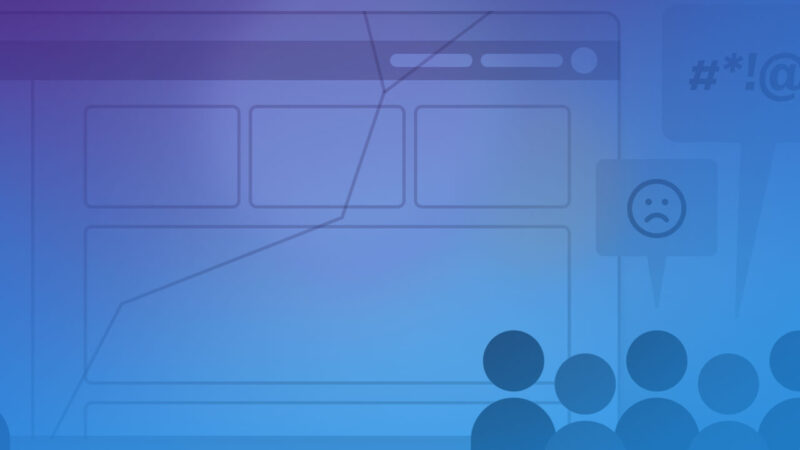
Article
EdTech Growth Series | Part 2: Planning processes to navigate your product’s next evolution
Your EdTech product has found its footing with a dedicated user base. The intuitive, fast-moving approach that got you here has served you well. But now you’re at a critical juncture — perhaps you’re expanding functionality, targeting new user segments, or completely reimagining core features. Whatever the catalyst, one thing is clear: a focus on engineering that often propels products’ initial successes might now need a shift towards researching users’ needs and experiences.
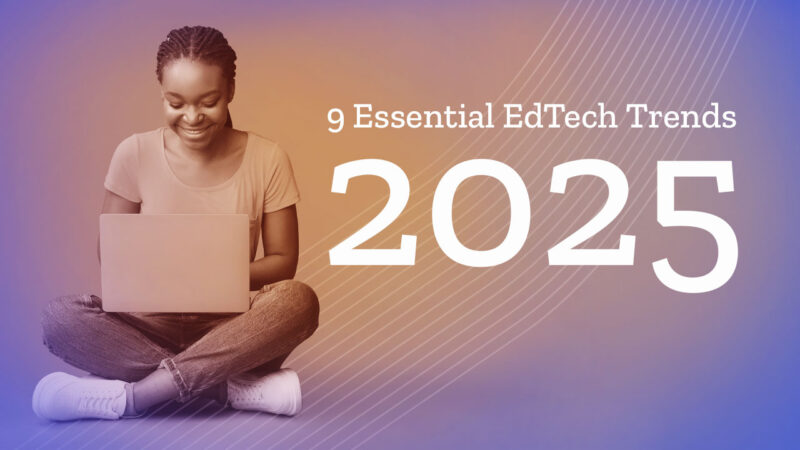
Article
9 Essential EdTech Trends Changing Product Innovation in 2025
As we enter 2025, we’re sensing an inflection point for the EdTech industry. While artificial intelligence continues to dominate the conversation, we’re experiencing a broad evolution toward more rapid experimentation that’s driving strategic innovation.

Article
Boost your EdTech user understanding through UX and CX team collaboration
Your User Experience researchers and designers and your Customer Experience team have a lot to offer each other. It’s easy, however, for UX and CX teams to work in silos. When UX and CX teams fail to collaborate, challenges can arise. These issues not only affect team efficiency but also impact the overall user experience.

Article
Take your EdTech product from problem to solution with these 3 ideation exercises
Of all the critical moments in the product design process, the leap from a defined problem to solution idea is one of the most exciting and critical steps. Whether building a product for the first time or generating ideas for the “next big thing,” an effective ideation process can ensure a strong start to the production cycle. Different business needs call for different kinds of ideas. All moments of ideation, however, benefit from a strong and creative plan for input and innovation.

3-Day Ideation Workshop
When done right, one of the most rewarding and fruitful things an EdTech product team can do is rapid ideation. Generating a multitude of solutions to user and business problems in a short period of time can be a key tool to quickly increase user loyalty and sales. But with the daily grind of product […]
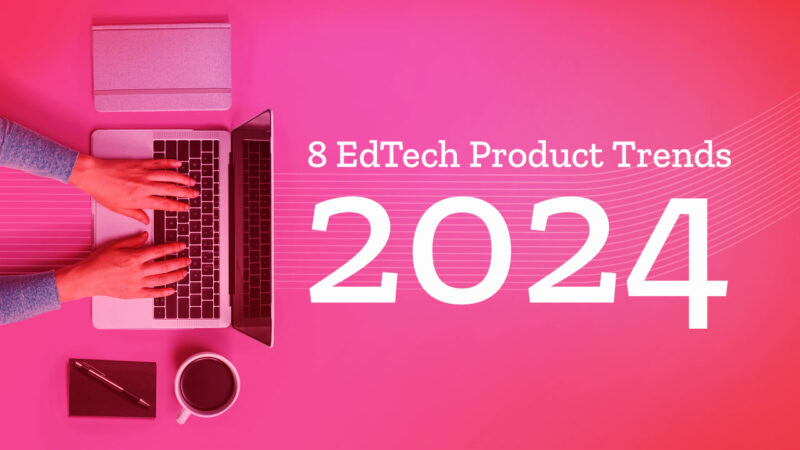
Article
8 EdTech trends to drive your 2024 strategy
We’re sensing a lot of pent up desire to move on big picture initiatives in 2024. The past couple years were filled with many unknowns as investment in the sector was heavily scrutinized for both early-stage and mature EdTech products. If you’re like many product leaders we talk to, you may be looking at 2024 with continued trepidation but feeling the pressure to address underlying issues that are keeping your product from being the best it can be. But 2024 could shape up to be your best year yet — if you play it right. We compiled a list of critical trends that will be the biggest influencers on your business.

Article
4 key takeaways from SXSW EDU 2023 that all EdTech product leaders should read
Another year, another successful SXSW EDU event! We’re always energized by the annual event, but this year might have been our favorite yet. (Full disclosure: We do have a habit of feeling this way every year). Openfield’s Chief Experience Officer, Trevor Minton, was in Austin at the event to immerse us in a wide range of topics that matter most to EdTech product leaders.

Article
Why service design needs to be part of your EdTech product development roadmap
For your EdTech product to be as valuable as possible, it’s important to meet users where they are. But what if you don’t know exactly where that is? How can you develop new products that meet their needs? Or successfully maintain products that continue to do so? UX research exposes areas where users may experience frustration within your product. Many times, though, additional challenges happen adjacent to the use of your product — outside the product itself. However, these obstacles can still impact the use of your product.

Article
2023 is a year of recalibration for EdTech. These trends will keep your product relevant.
As we begin 2023, the education industry is in a very different place than where we were three years ago. With nearly all schools returning to in-person instruction, the reliance on technology solutions as the sole provider of learning is not as prevalent. That means EdTech product users are really scrutinizing what they are willing to take a chance on. They’re not going to simply use whatever is available. Instead, they will be more discerning about the products they adopt — and those they remain loyal to.

Article
Bring users into your EdTech product design process with digital co-creation session
A co-creation session is a powerful tool to unleash a wide range of new ideas for your EdTech product. Instead of waiting for user testing or other types of validation, you can generate ideas alongside your users. Co-creation is a beneficial exercise in upfront discovery as a method to gather early input from users. But it can also be used in later stages to either extend your product roadmap or uncover solutions when you have questions or features you want to update.

Article
How your UX team can keep stakeholder conflict from derailing your EdTech product launch
A comprehensive approach to EdTech product development means more stakeholders are at the table. But when groups who should be working toward the same goal are at odds, it slows down the process and the progress toward your product’s launch. Developers are now joined by teams from content, marketing, customer support and other product groups (just to name a few). This diversity of roles and disciplines now represented on the team leads to a better product in the end. But the growing number of personalities and perspectives increases the potential for conflicting priorities.

Article
Trust debt: How minor inconveniences in your EdTech product grow into a pricey liability
In the world of EdTech product development, accumulating some degree of debt is acceptable. Minimal levels of design debt (design-related inconsistencies that occur within a product over time) or technical debt (shortcuts in development that prioritize speed over perfect code) are a reflection that you’re constantly evolving and updating your product. What happens, though, when multiple debts mount over time and cause increased user frustration? The result is trust debt — an increasing lack of confidence in your product and your brand.
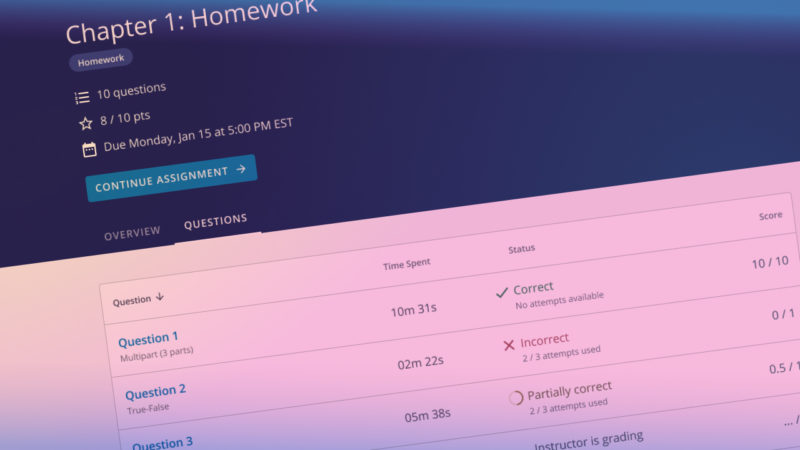
Multi-phase research and design drive high-impact improvements to the student assignment experience
Wiley Publishing: WileyPLUS Student Assignments Multi-phase research and design drive high-impact improvements to the student assignment experience. Student assignments are complex by design. When that complexity is amplified by technical constraints, retrofitted navigation, and poor information hierarchy, it results in a frustrating experience for students and instructors. Openfield harnessed the complexity into a focused experience […]

Resource
The product leader’s guide to discovery sessions
Whether you’re launching a new EdTech product or making improvements to an existing one, discovery sessions are a critical step that will allow your product team and stakeholders to develop a shared vision and strategy. To make the most of this inherently collaborative, interactive process, you’ll need clear goals and a practical agenda. Download our free guide to learn how to conduct a meaningful discovery session for your next UX research and design project.

Article
To build a truly customizable EdTech product, look to continuing education.
The most successful EdTech products stay close to the evolving needs and preferences of users. The disruption in education caused by COVID-19 over the last couple of years — and therefore in EdTech — have made that aim challenging indeed. Of course, it’s not just education that’s been rattled; the job market has been, too. Many employers are having a hard time finding and keeping workers. Both students and workers are asking how they can learn and grow more efficiently and effectively, and yesterday’s solutions just won’t do. In short, people are more focused on their personal goals and less willing to spend time on unrelated tasks with low or no payoff.

Article
EdTech products must meet the needs of hybrid classrooms. UX can help.
The COVID-19 pandemic turned the traditional in-person classroom experience on its head. Students were suddenly remote, and instructors scrambled to continue teaching. While most students have returned to the classroom, the hybrid model — where some students are in person and others are remote — is likely here to stay. And that brings a series of unparalleled challenges and opportunities for EdTech products. This evolution of the traditional classroom offers great freedom and flexibility for both instructors and students. But it also presents new problems for teaching and learning. Effective UX design can help defray pain points and create products that are valuable for all users — whether they’re in-person or remote. For your EdTech product to have a lasting impact, it must accommodate the realities of the hybrid classroom.

Article
Is your EdTech product roadmap at risk over the long term? Ask your UX team.
The better the roadmap, the better the journey to your destination. It’s true on a vacation, and it’s true for your EdTech product development. Similar factors have to be weighed out when you plan: timelines, experiences, costs, and goals. Unfortunately, many product roadmaps that intend to reflect long-term plans are actually short-sighted. They may not align properly with your strategic direction, or they might be too rigid to handle the reality of what the future holds. And most problematically, roadmaps can be void of real user experience insights. Unless it aligns to what is beneficial to the end user at every step, your roadmap could be at risk of these kinds of vulnerabilities. You’ll need to strengthen it and ensure it’s much more than an informational document.

Article
2021 delivered more uncertainty for the EdTech industry. How different will 2022 be? Our team weighs in.
When the pandemic shut down life as we knew it in 2020, schools had to somehow keep their digital doors open. The EdTech world rose to the occasion, providing products that helped facilitate emergency-state educational experiences. In 2021, while the threat of the virus seemed to lessen at times, uncertainty remained. EdTech providers — and the educational market that relies on their products — had to ask exceptionally difficult questions with no clear answers. Who are our current users, now that the height of the crisis has passed? How do we prioritize blended experiences? Will we face another cycle of fully remote learning — and how can we prepare?

Article
Integrate instructors’ expertise in your EdTech product’s UX design to improve learning outcomes
Your EdTech product is just one facet of a greater educational experience. Technology, content, and teaching methods are all essential to creating an optimal situation. And of course, these three facets only become relevant when instructors and students are skillfully using them — to teach and to learn. It’s all too easy to have tunnel vision with your EdTech product. You’re naturally dialed in to the most important principles of UX. You know your product needs to be intuitive, predictable, and familiar for your users to have a seamless interaction. But your focus on good UX can actually erode the learning experience — the very thing you are designing to support.
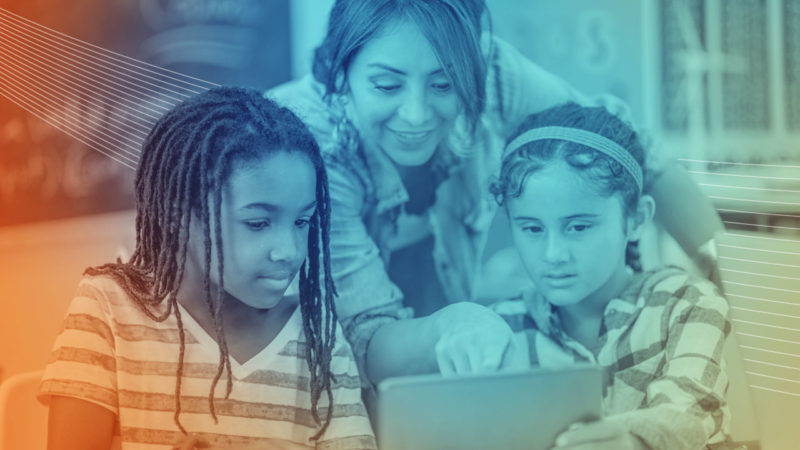
Article
How EdTech leaders can score quick UX wins without sacrificing the long-term product vision
UX issues are an unavoidable part of digital product development. That’s true whether you’re updating an existing feature or readying a brand-new EdTech product for launch. The real question isn’t whether you’ll encounter usability issues, but what you do about them. Identifying the symptoms of your usability problems may be easy enough. Perhaps your CX team is swamped with complaints about a particular task, or maybe you’re seeing a lack of engagement with a specific feature. But diagnosing the underlying problems — the why behind those glaring symptoms — can be much more challenging. Of course, doing so is necessary if you want to find the right solutions.
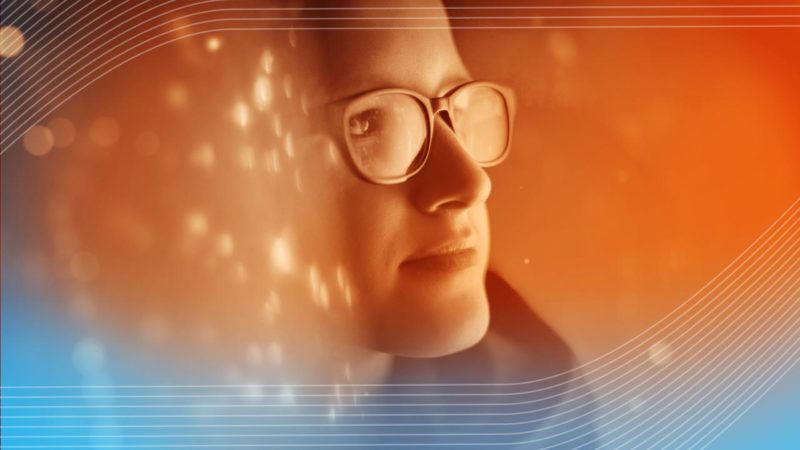
Article
How early-stage EdTech products can fast track releases while protecting their investment
Whether you’re a new EdTech startup or one with a substantial track record, you’re facing similar challenges when ramping new products and features. You need to define how your new product fits into your overall vision and meets user needs. And you’ve got to make smart judgments about how to use your resources. As you try to handle a slew of competing interests, each with a price tag, hiring an external UX partner might feel like an investment you can’t afford. After all, you’re working with clear budget constraints. Funneling assets outside your organization may feel unwarranted.

Article
Ask your users: why UX research is key to an effective user journey map in EdTech
Knowing how and when to conduct UX research is mission critical for your EdTech product. With well-timed research, you have the insights you need to make the best product decisions. And most importantly, research provides a window into the minds of your product users. Your user journey maps are case in point. Mapping your user’s journey without UX research is like a modern-day cartographer working without satellite images. EdTech products shouldn’t rely on journey maps designed out of probabilities. It’s like using a compass and telescope when you have specialized mapping software at your disposal.

Article
Clearing learning experience blind spots to bolster UX is key to differentiation in EdTech
As an EdTech product leader, you know how challenging it can be to set your product apart from the competition. And the bar for EdTech products is only being set higher. The most successful EdTech products will need to prove more than their efficacy. They’ll need to improve learning outcomes by leaning into learning science (LS) — the study of how learners learn. Getting a product to market that provides an excellent user experience (UX) is just not enough anymore. The core value of a successful EdTech tool should also be a great learning experience (LX). Simply put, UX + LX = good EdTech.

Article
Kicking off a UX project: how to align stakeholders and hit the ground running
For EdTech companies the beginning of a new UX project is critical. Unless your entire team gets on the same page about your discovery process and big-picture project goals, you risk inadvertently duplicating work and missing deadlines. Team members’ opinions about processes can come into conflict. The success of the project depends on the entire team coming into agreement — and that starts with a kickoff meeting. An effective kickoff sets the tone for what will be a collaborative effort — one that ensures all stakeholders are heard. The goal is to work toward consensus of discrete problems from disparate points of view. Here’s how to take full advantage of your kickoff meeting.
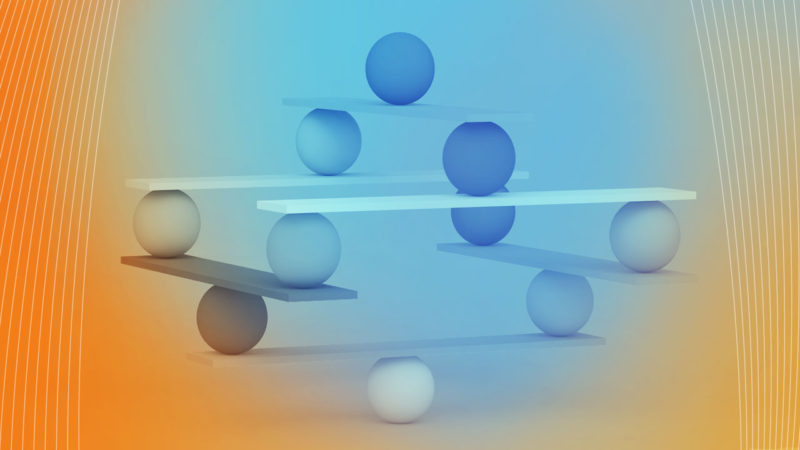
Article
To innovate in EdTech, balance long-term initiatives with short-term wins
Every EdTech product leader wants to innovate in their space and make room for bold UX solutions that meet users’ unarticulated needs. But innovative solutions take time and resources to develop. The benefits are delayed — and they don’t always come with a guarantee of success. At the same time, your team likely feels pressure to stay on track with fast-moving development cycles and the perennial demand for measurable improvements. The result? Long-term design concepts are first on the chopping block as “quick wins” and inevitable fires jump to the front of the line every time.

Article
Leveraging learning sciences & UX to put learning outcomes at the forefront of your EdTech product
The best EdTech products aim to meet the evolving needs of their users. What’s also true is that the best EdTech products are working diligently to uncover new opportunities for teaching and learning. In the world of education, meeting your users’ needs means more than simply crafting a seamless user experience. It means facilitating improved learning outcomes. The future of EdTech will be one in which products are evaluated for their usability and the efficacy of their educational content. In other words, does your EdTech product provide a better education for its users?

Article
Is your EdTech product poised to stay relevant in the post-pandemic world?
During the coronavirus pandemic, educators turned to EdTech to bridge the gap between traditional and remote learning environments. Demand for EdTech products spiked as companies like yours worked overtime to accommodate wave after wave of new users — and adjust to radically different user needs, too. It was a wildly turbulent year, one that required your team to work at a breakneck pace while managing the stress of living through a global pandemic. And it was equally wild from a business standpoint. With so much new demand, the past year was, for many EdTech companies, an unprecedented success.

Article
What are your EdTech product’s biggest competitors? The answer may surprise you.
Competition in the EdTech space is fierce. So it makes sense that you keep a close eye on what your closest competitors are up to. You’re probably acutely aware of any gaps between your own product’s capabilities and those of your biggest rivals. So much so that achieving feature parity may be a top priority when planning your product’s roadmap. No doubt about it: It’s crucial to understand and keep pace with your competitors. But just because the most comparable EdTech product on the market offers a particular feature or functionality doesn’t necessarily mean you should, too.

Article
How to build a self-paced or adaptive EdTech product that keeps users coming back
As instructors, students, and casual learners alike embrace a personalized, learn-at-your-own-pace ethos, self-paced and adaptive learning products are growing in popularity. This approach represents a key opportunity for EdTech products like yours — but it comes with an added layer of responsibility. All EdTech products must be user-friendly to succeed. However, when it comes to self-paced products and adaptive products, the pressure to deliver a seamless and intuitive user experience (UX) is much higher.

Article
Your user base includes 1M+ non-native English students. Is your EdTech product ready to serve ESL learners well?
Your EdTech product serves an international, multilingual, and multicultural audience. That’s true even if your product is only ever used in schools and colleges within the United States. You see, whether your product is geared toward K-12 or higher education, the demographic trends are the same: American schools are increasingly composed of non-native English speakers.
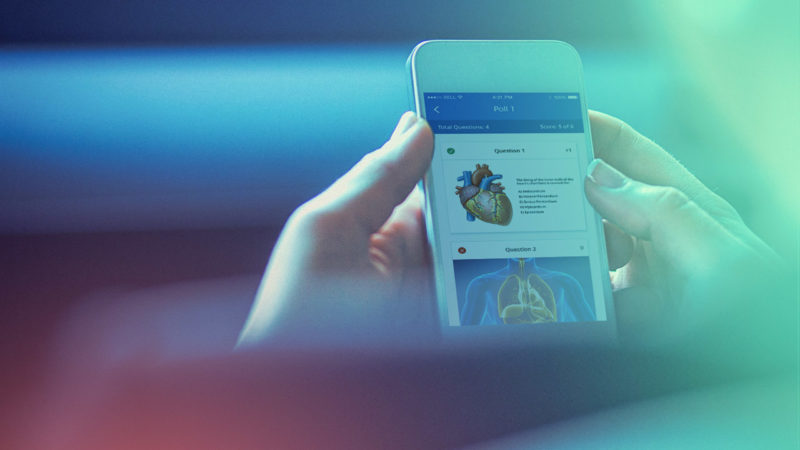
Rapid adoption of digital transformation leads to the world’s top student engagement system
iClicker Rapid adoption of digital transformation leads to the world’s top student engagement system. iClicker came to Openfield with a vision to create a digital experience that would improve on its already pervasive handheld remote devices. The resulting experience quickly led to market dominance by giving instructors new ways to engage with their students who […]
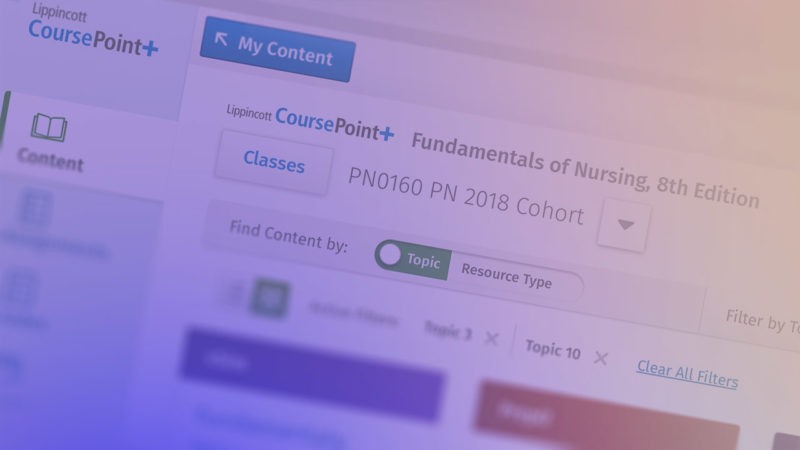
Research leads to design improvements that better align to how users think and work.
Wolters Kluwer Health: CoursePoint+ Research leads to design improvements that better align to how users think and work Openfield helped Wolters Kluwer uncover a serious issue that was causing user friction in their product, CoursePoint+. By realigning the user experience to mirror how instructors think and work, we eliminated user frustration and increased satisfaction. In […]
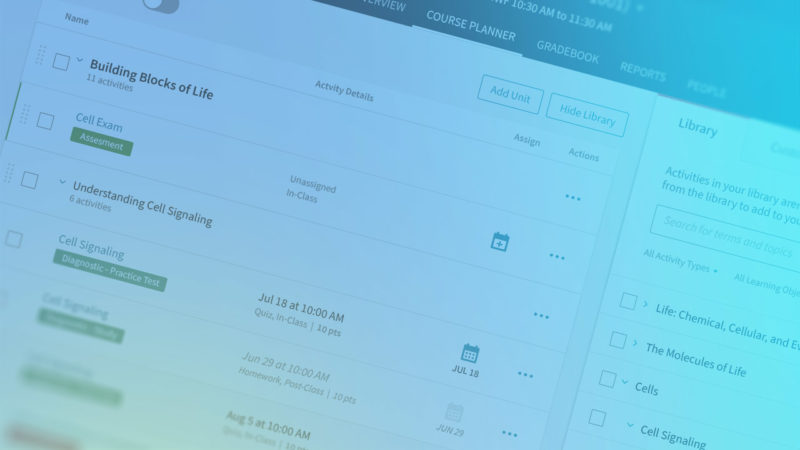
New design system reduces wasted time and unifies user experiences across the product suite
Macmillan Learning: Design System New design system reduces wasted time and unifies user experiences across the product suite Because Macmillan Learning’s suite of EdTech products were designed at different times by different teams, growing design debt was leading to duplication of internal efforts and inconsistencies in the user experience. Openfield analyzed the issues, created a […]

Article
More use cases mean more complexity. Here’s how to preserve your EdTech product’s user experience.
Your EdTech product serves a range of users in different situations with different needs. That’s true even if your product is lean and focused. But as your user base and feature set grow over time, so too will the number of use cases you must account for in your UX design. Growth is a good thing. Yet when it comes to EdTech products, more use cases mean more complexity. And complexity is often the enemy of usability.

Article
When (and how) to use beta features in your EdTech product
User research is a cornerstone of digital product design and development. And conventional wisdom dictates that you should thoroughly test new features and functionalities before you release them to users. But there’s one notable exception to this golden rule: beta features. Presenting a feature as “beta” can be a great way to increase your team’s agility, go to market faster, respond more quickly to your users’ most pressing requests, and test out concepts on a wider audience.

Article
EdTech users are more stressed than ever. Here’s how to be part of the solution.
As the coronavirus pandemic continues to upend life as we knew it — including the usual in-person educational models — students, teachers, and administrators are more stressed than ever before. You’ve seen it with your own eyes. Your EdTech product users are struggling with unprecedented challenges. And they have the elevated anxiety to match. To design the right solutions within your product — and effectively reduce user stress — you must first look at your users’ lives outside your product.

Article
Use these tips to beat the EdTech competition to market (without sacrificing quality)
The EdTech market is ripe for disruption. Between pandemic-driven changes to educational models and an influx of investors, the industry is now in a state of rapid flux. Which means the pressure is on for your EdTech company to bring useful new features to market as quickly as possible. Of course, that’s easier said than done. EdTech has long marched to the beat of its own industry-specific drum, often moving at more of a leisurely canter than a breakneck gallop.

Article + Video
2020 was a whirlwind for the EdTech industry. Our team shares what to expect in 2021.
2020 was most clearly defined by one thing: COVID-19. That was true for the world at large, and it was also decidedly true for the smaller world of EdTech. The pandemic forced a handful of industries into the spotlight. Chief among them? Health, finance — and education. As schools everywhere rushed to assemble remote learning protocols, EdTech products and other tech companies (hello Zoom!) stepped up in a major way to fill the gaps. But that doesn’t mean it was seamless. Far from it.

Article
How EdTech can deliver rich, collaborative learning experiences — in a remote context
The primary trend in 2020 was the sudden shift to remote learning. As the COVID-19 pandemic forced everyone to go remote, educators scrambled to find fast, effective digital solutions to facilitate their new reality. While we’re all relieved to be in 2021, many challenges remain. We’ve already established that when it comes to EdTech tools, digital doesn’t equal remote. And EdTech companies are still working to develop or optimize tools to support online classes.

Article
2020 was a whirlwind for the EdTech industry. Our team shares what to expect in 2021.
2020 was most clearly defined by one thing: COVID-19. That was true for the world at large, and it was also decidedly true for the smaller world of EdTech. The pandemic forced a handful of industries into the spotlight. Chief among them? Health, finance — and education. As schools everywhere rushed to assemble remote learning protocols, EdTech products and other tech companies (hello Zoom!) stepped up in a major way to fill the gaps. But that doesn’t mean it was seamless. Far from it.

Article
Defend your EdTech product’s marketshare by thinking like a startup
Are you adapting to meet your users’ changing needs in the pandemic as quickly as your competitors? As an established EdTech company, you’ve already carved out a unique spot for your product (or suite of products) in the market. Now that you’ve solidified your place within the EdTech space, your focus has shifted from staking a claim to defending and growing your marketshare. But if you’re not listening carefully to them and adapting your product quickly enough, someone else may beat you to it.

Article
Keep your EdTech product team on the cutting edge by creating an informed, forward-thinking culture
As an EdTech executive, it’s your job to think big picture. That means keeping your broader business objectives top of mind. And it also means staying in the know about industry trends. To that end, you may follow a curated news feed or participate in industry-specific LinkedIn groups. Doing so helps you stay on top of current events, trending technologies, and industry forecasts.

Article
Digital doesn’t equal remote: EdTech insight in the era of COVID-19
In the midst of the ongoing coronavirus pandemic, schools across America are embarking on a totally unexpected — and wholly unprecedented — remote-learning experiment. As the fall 2020 semester kicks off, K-12 schools and higher education institutions everywhere are tentatively rolling out a variety of remote instruction plans. As they scramble to make this arrangement work, educators are looking to EdTech to help close the loop.

Article
Why your UX research plans must align with your EdTech company’s business goals
UX research is a critical component of product development. It’s the key to unlocking your users’ needs and preferences. And it’s what enables you to build the best, most user-centric EdTech product possible. Of course, you already know to include key workflows and features in your user testing plan. But what about your broader business objectives — the quarterly and annual goals by which you measure your product’s progress?

Article
Fuel smarter EdTech product development plans with discovery phase prototypes
The discovery phase of any EdTech project — whether a new product launch or a feature update — is all about gathering information. Of course, this usually includes a variety of activities. You might simultaneously be hammering out business objectives, performing a competitive analysis, and interviewing your users, among other activities. The goal? To emerge with a full understanding of your big-picture problem, as well as a keen sense of how best to solve it.
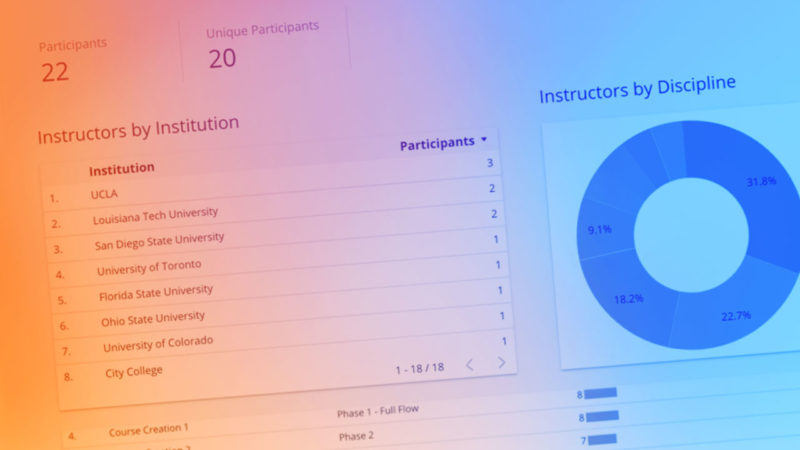
Article
How EdTech product executives can make sense of mounting UX research data as products scale
If your EdTech company is committed to your product’s UX, then you already know UX research isn’t a one-and-done activity. It’s an ongoing, holistic part of your product life cycle. Which means that your UX team may generate dozens of research reports over the course of a single year. Each individual report tells a story and provides actionable insights. But as your research scales, so does your data. Before you know it, you can amass an avalanche of information — with no simple way to make sense of the bigger picture story it tells.

Article
How to develop a corporate online learning platform that drives engagement and gets results
Today’s corporations are strategically investing in continuing education. Whether they are seeking to upskill or reskill their workforce, learning and development (L&D) initiatives are a cost-effective way for organizations to strengthen their workforce, keep current with emerging technologies, and stay ahead of the competition. As a result, many industries (and the advocacy groups that serve them) are pouring more resources into learning and development (L&D) initiatives. And a significant percentage of those funds are now being funneled toward online learning platforms.

Article
COVID-19 is stress-testing EdTech Products. Will you meet the demand?
The coronavirus pandemic continues to rapidly change (and challenge) the world in myriad ways. With social distancing a must for the foreseeable future, educators around the globe are scrambling to migrate to online learning. As a product leader at an EdTech company, you are in a unique position to help educators and students in this tumultuous situation. Chances are you’re already doing just that by offering your product free of charge for the duration of the pandemic.

Article
2020 Trends in EdTech UX – What product leaders should expect in the coming year
Being a great product leader requires a constant balancing act between meeting the need to release immediate improvements while simultaneously planning for what’s coming in the next year and beyond. Dealing with today’s concerns, such as Accessibility compliance and onboarding issues, has a way of getting in the way of planning for bigger trends that will have an impact on the success of your product.
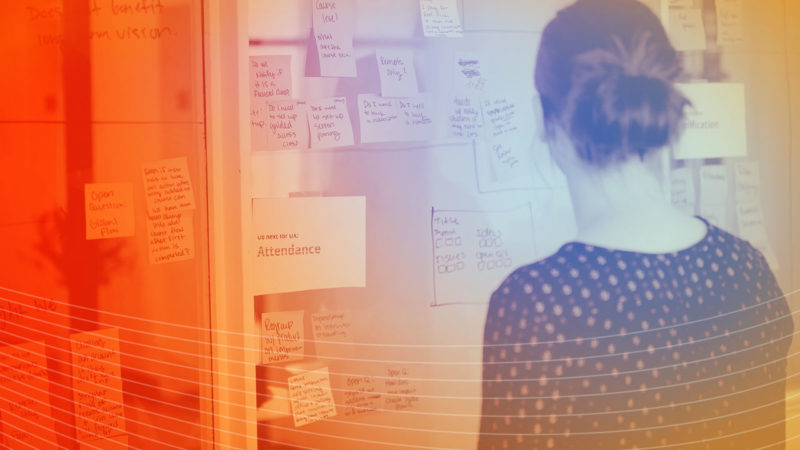
Article
Managing your UX investment to protect and nurture your product
As your product needs evolve over time, the ability to scale your UX resources up or down is crucial to maximizing your product’s growth — and your UX budget’s impact. In fact, that’s one of the reasons we encourage EdTech companies to think of their UX spend as an investment rather than a strict, project-by-project budget. When you invest in UX as an ongoing project (on a quarterly basis, for example), you free up your product and UX teams to work more efficiently and productively as they identify solutions and resolve problems.

Article
How product leaders can unite EdTech stakeholders and teams around a common vision
As a product leader, one of your primary responsibilities is to connect the leadership team’s vision of their EdTech product with the actual needs of the product’s users. To do this well, you must execute leadership’s vision responsively. This means modulating the product roadmap as your product team surfaces new information about user needs or identifies risks associated with leadership’s vision. Leadership teams are naturally more future-focused.

Article
The purpose of UX discovery sessions – and how to make the most of them
When we begin a UX engagement with a new EdTech client, our first priority is to quickly learn as much as possible about our client’s product and users. Our collaborative process begins with a phase of research and user understanding that includes an in-person discovery session. The discovery session allows a products’s stakeholders to identify problems, clarify goals and priorities, and align around a shared vision for their product – before identifying solutions. Here’s what you need to know about this critical planning session — and how you and your UX team can make the most of it.

Article
Innovation in the EdTech space: Why it lags behind – and what you can do about it
Innovation within the EdTech space can sometimes feel painfully slow. That’s especially true when compared with digital products in other spaces, such as social media, finance, and health apps. This innovation drag is felt not only by EdTech companies themselves, but by users, too. Student users, in particular, are quick to notice when EdTech products aren’t on par with the many other apps they use on a daily basis.

Article
Investing in UX: How to structure your UX budget for maximum ROI
When product teams put together budgets for new products or product releases, they often struggle to determine how much money to allocate for UX research and testing. This confusion flows from uncertainty about how to view UX’s role in the product development process. Is UX a one-time project with precise parameters and a predictable scope, like designing a logo? Or is it an ongoing program of activities that ought to be woven through the entire development process?
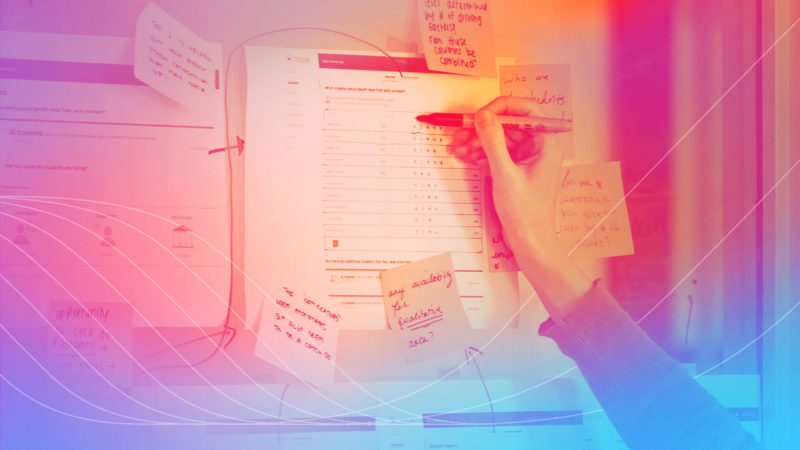
Article
5 tips for integrating third-party applications without sacrificing the user experience
Over the past few years, the UX of EdTech products has improved by leaps and bounds. That’s true at the individual application level, anyway. But it’s a whole different story when you look at the user experience of product integrations that bridge two or more applications. It’s hard enough to integrate platforms in situations where you have complete control, but it can be incredibly difficult to integrate third-party platforms in a meaningful, seamless fashion.
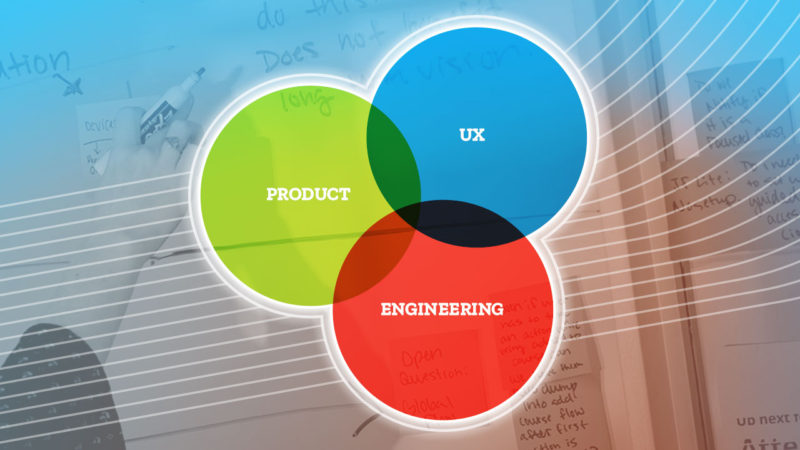
Article
All hands on the ball: a collaborative approach to building new product features
The launch of a new product represents a huge leap, but it’s really just the first big step in a series of many. Over the course of a healthy product’s lifespan, your team will continue to work inside the product for years to come, fixing bugs, pushing out updates, making UX improvements, and adding new features. New features require efforts from UX, engineering, and product teams with each leading at different times.

Article
UX research methods (part III): When to use quantitative data to justify product improvement decisions
Qualitative research may be the bread and butter of UX testing, but quantitative UX research methods have an important role to play in the iterative product design process. There are many reasons product teams should consider using quantitative research, from the identification of existing problems to justifying expenditures in order to get buy-in from stakeholders.
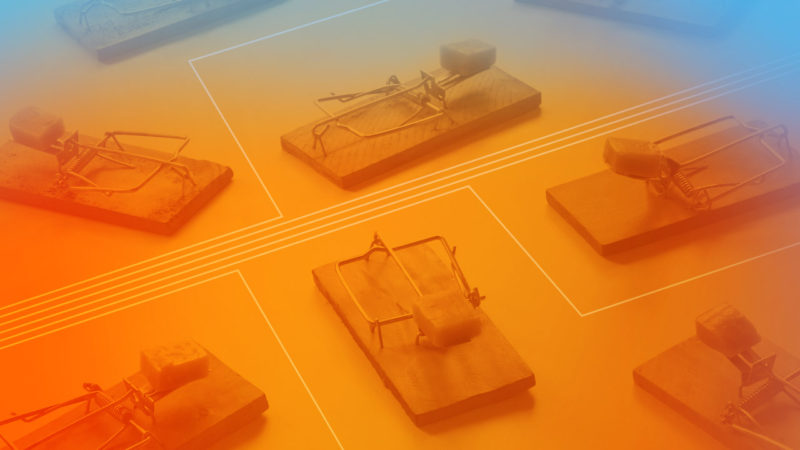
ARTICLE
‘Good enough’ usually isn’t: Avoiding traps that sabotage MVP success
Minimum Viable Product. Minimum Awesome Product. Minimum Loved Product. No matter what you call it, your product needs to delight users on the first release and every iteration beyond that, or it will fail.

Article
Inclusive design: why EdTech companies should go beyond compliance
Truly inclusive product design aims to create products that work seamlessly for all people, in all situations. This may seem like a tall order, but it really should be your company’s goal. Not only is it an ethical imperative, but it’s good for business, too.

Article
Nontraditional learning: How EdTech tools are different for corporate and personal users
When most people think EdTech, they naturally imagine students and instructors in K through 12 or higher education settings. But learners and teachers can be found everywhere from boardrooms to living rooms. And while the reasons for learning vary, companies that make learning products for corporate and personal use can benefit greatly from the knowledge of their counterparts who target K-12 and higher ed sectors.

Article
Borrow cues from search, retail, gaming to improve UX in EdTech products
From administrative tasks like taking attendance and grading quizzes to features that enable students to learn and succeed, EdTech products have become more and more powerful. But that power can make these tools more complicated for users. Learn how to align tools with common mental models from search, retail, and gaming.
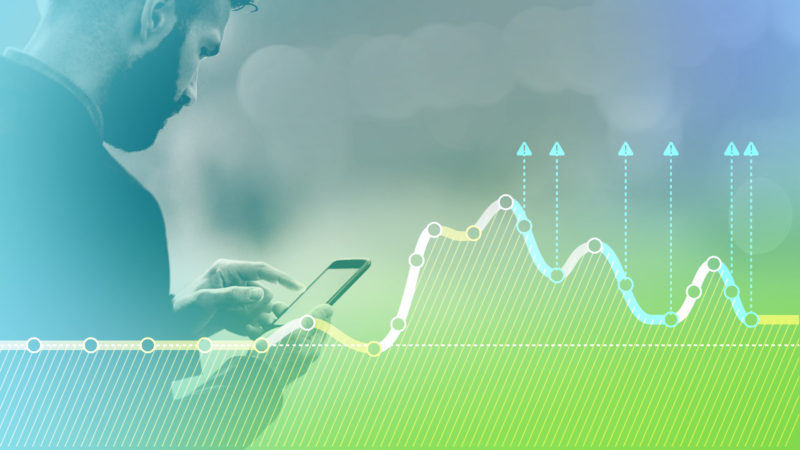
ARTICLE
In EdTech products, friction can be good or bad. A balance of both is the answer.
User journeys through apps, software and websites must follow optimized paths with no confusion or distractions.
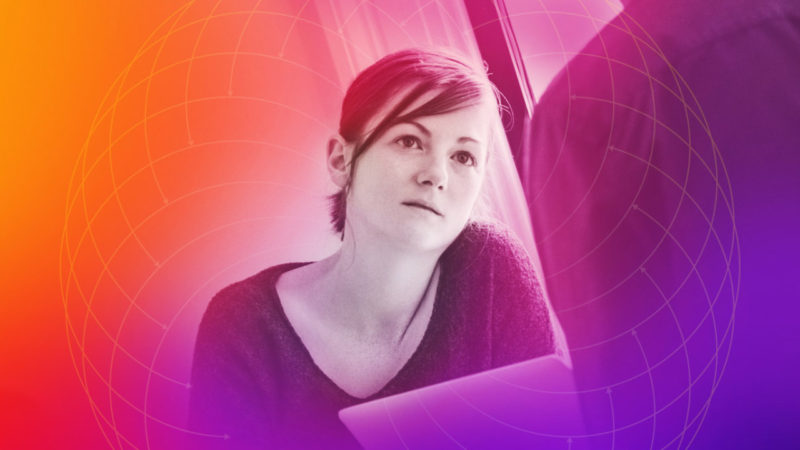
ARTICLE
UX is not a one-time event. What EdTech product leaders need to know about the cost of inaction.
Keep it active … or face the consequences. While many organizations make the commitment to implement UX practices, we’ve found that many adopt best practices of UX only to a point.